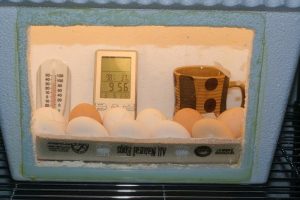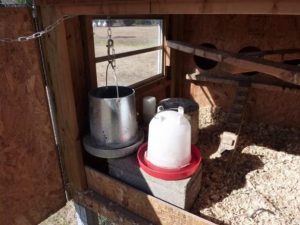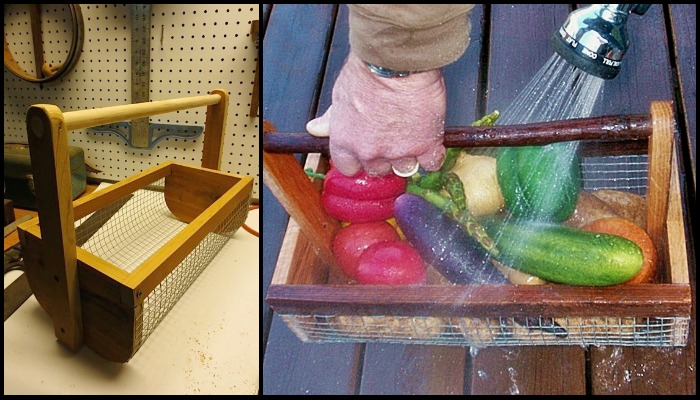
Have you ever tasted fresh home-grown vegetables? It’s one of the greatest food pleasures, and nothing in the supermarket can match the flavor. But have you ever wondered why that is? It could be that home-grown vegetables are simply fresher since they haven’t been transported long distances.
But there’s also evidence that fruits and vegetables grown in your own backyard contain more nutrients than those from the supermarket. So if you’re looking for the tastiest and healthiest produce, it might be time to start growing your own!
If you are growing various vegetables on your property, then a vegetable hod is a necessity among your gardening equipment. A vegetable hod can be an extremely useful tool for gardeners who are growing various vegetables on their property.
It can be used to transport vegetables from one location to another or to store them temporarily while you are working on other gardening tasks. Making your own vegetable hod is a relatively easy process, and can be a great way to save money.
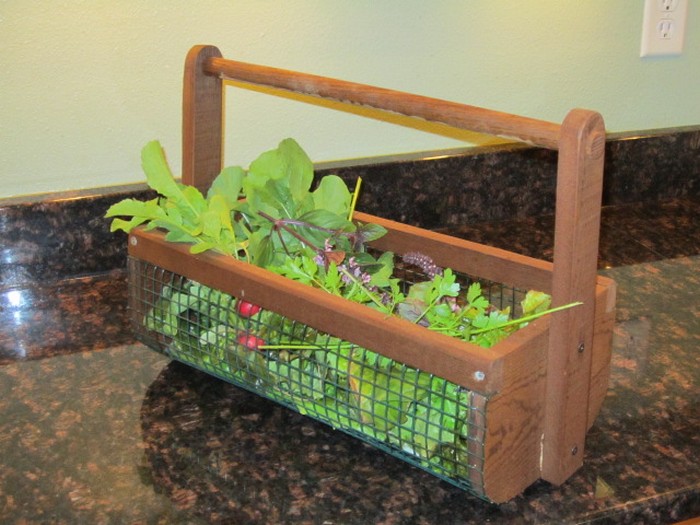
A vegetable hod is a simple but very handy gardening item that makes it easier to harvest and bring vegetables to the kitchen!
If you have any excess timber and wire mesh from previous DIY projects, you can easily make a vegetable hod. This is a great way to upcycle materials that would otherwise go to waste. Take note that it is important to use timber like cedar for this project since the purpose of this hod is to easily carry all harvest at once and wash them right in the vegetable hod before bringing them inside the house.
Some timbers simply won’t stand up to being constantly damp. Cedar is known for its resistance to rot and decay, making it the perfect material for this project.
Do you think you need a vegetable hod for your garden? You can do this as your weekend project!
If you’re looking for a fun and unique gardening project, why not try making your own vegetable hod? Not only will you get to show off your creative side, but you’ll also be able to reap the benefits of fresh, home-grown produce.
Plus, if you make a few extra hods, you can give them as gifts to your gardening friends. To get you started, we’ve gathered a few DIY vegetable hod samples for your inspiration. Take a look and see which one speaks to you. With a little time and effort, you’ll have a beautiful and functional vegetable hod of your very own.
Contents
Making a Vegetable Hod
Materials
- 1″X 6″ Cedar 3′ long
- 1/2″ Wire Mesh 16″X 16″
- 3/4″ Dowel
- Carpenters Wood Glue
- Nails
- Staples
- 1 ½” Wood Screws
Tools
- Sander
- Circular Saw
- Jigsaw
- Wire Cutter
- Staple Gun
- Brad Nailer
- Drill
Instructions
Step 1: Preparing the Wood
- Measure and Cut: Using the circular saw, cut the cedar plank into two pieces for the sides (each piece should be approximately 1′ long) and two pieces for the ends (each piece should be approximately 9″ long). The remaining piece will form the base of your hod.
- Shape the Sides: Use the jigsaw to curve one end of each side piece, which will form the top edges of your hod. This curved design makes the hod more comfortable to carry and gives it a more aesthetic appearance.
Step 2: Assembling the Frame
- Assemble Sides and Ends: Apply carpenter’s wood glue to the edges where the sides meet the ends. Secure these using nails and the brad nailer for extra stability. Make sure everything is square as you assemble.
- Attach the Base: Fit the base piece into the frame. It should sit snugly against the bottom edges of the assembled sides and ends. Glue in place, then reinforce with wood screws drilled through the sides and ends into the base.
Step 3: Adding the Handle
- Cut the Dowel: Measure the width of the hod and cut the dowel to be slightly longer than this measurement, allowing it to protrude a bit on both sides.
- Install the Handle: Drill two holes on the curved top edges of the side pieces, ensuring they are aligned. Insert the dowel through these holes. You can add glue to the holes before inserting the dowel for added strength.
Step 4: Attaching the Wire Mesh
- Cut the Mesh: Use the wire cutter to trim the mesh so it fits within the frame you’ve built, covering the bottom and sides like a basket.
- Secure the Mesh: Using the staple gun, attach the wire mesh to the inside of the hod. Make sure it’s tight and secure, with no sharp edges protruding.
Step 5: Finishing Touches
- Sand the Hod: Use the sander to smooth all surfaces, particularly around the edges and handle to prevent splinters.
- Optional Finishes: Apply a wood sealer or a coat of varnish to protect the cedar from moisture and decay, enhancing the hod’s durability and appearance.
Step 6: Inspection and Testing
- Inspect Your Work: Check all connections and finishes for any potential issues. Make sure the mesh is securely attached and that there are no loose screws or nails.
- Test the Hod: Gently test the hod with a few vegetables to ensure it holds well and is comfortable to carry.
Click on any image to start the lightbox display. Use your Esc key to close the lightbox.![]()
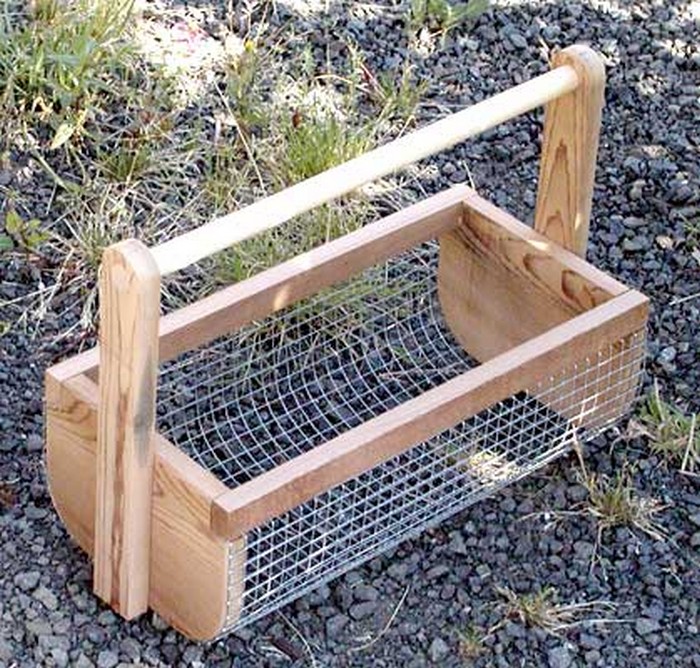
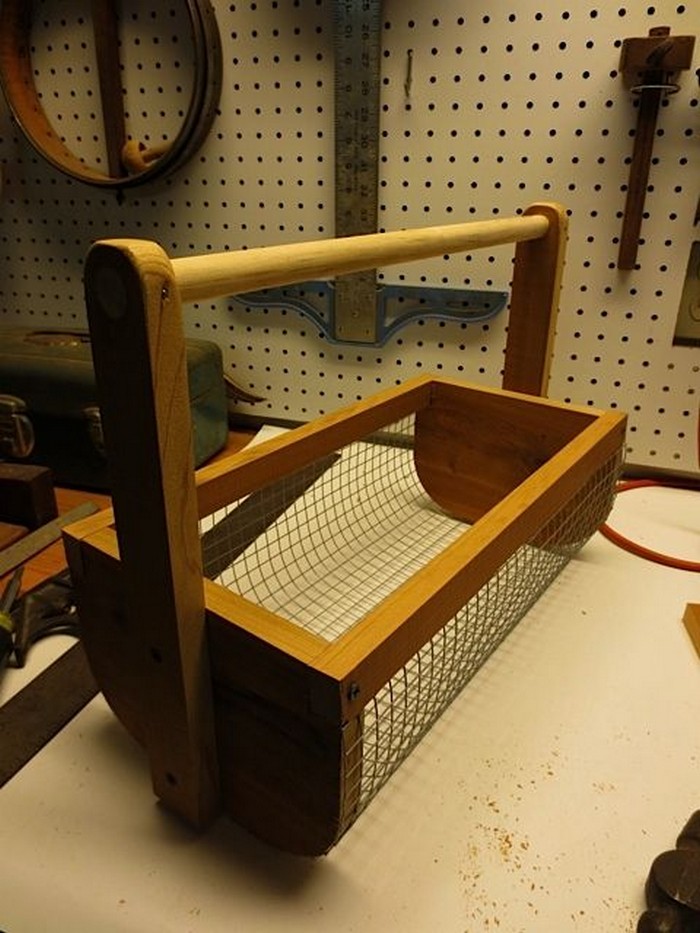
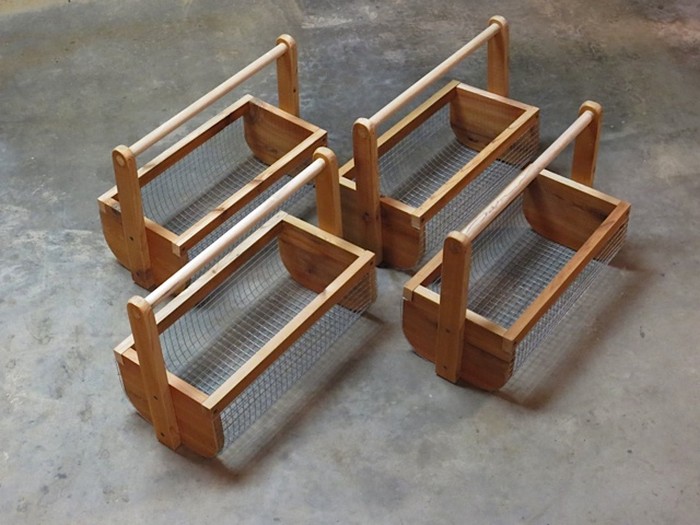
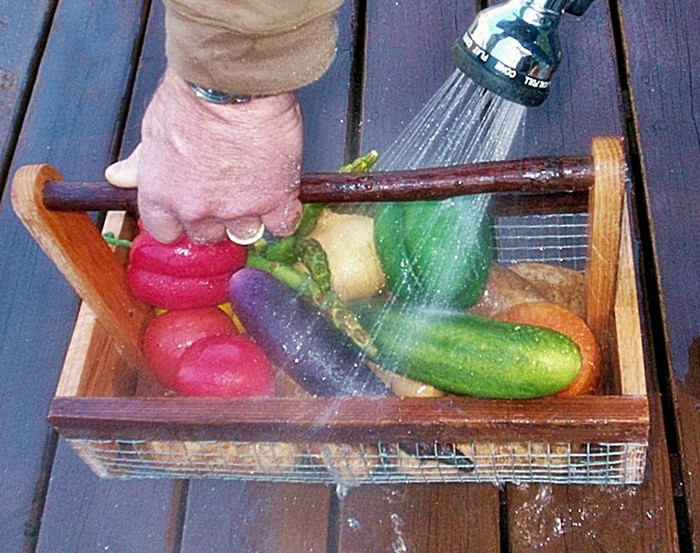
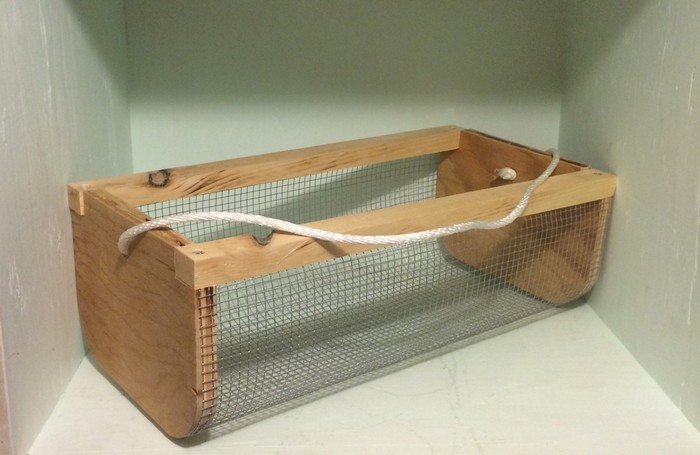

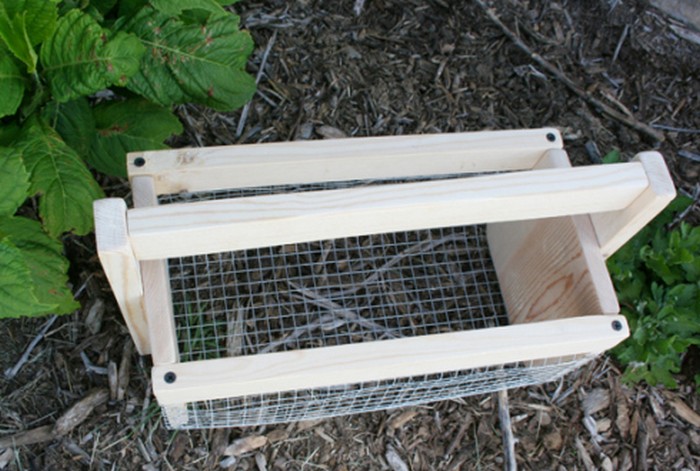
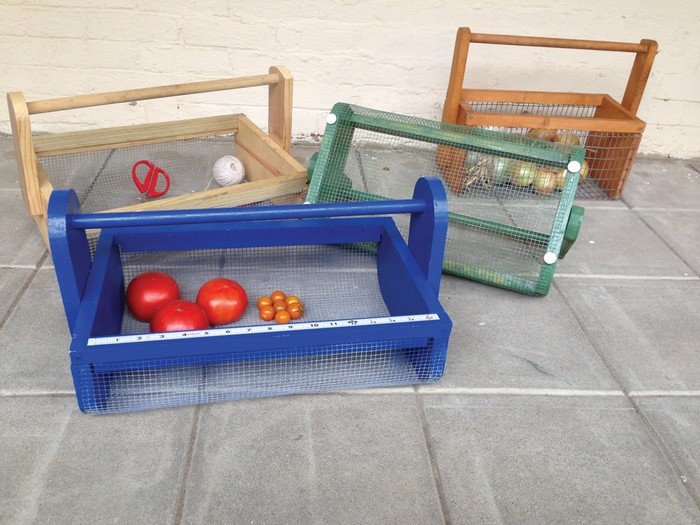
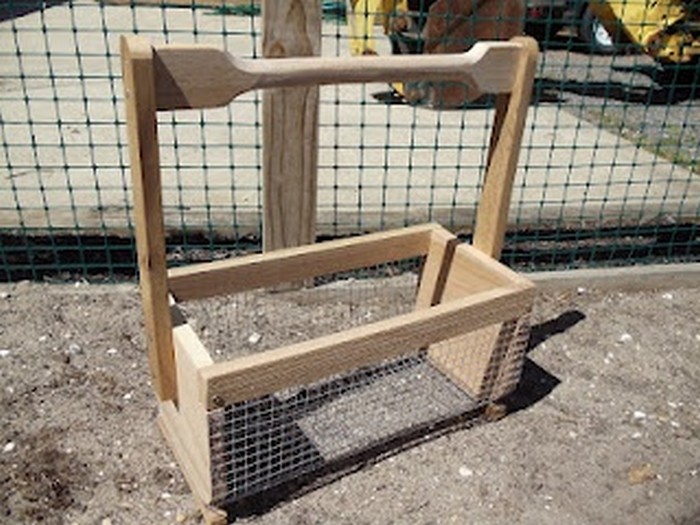
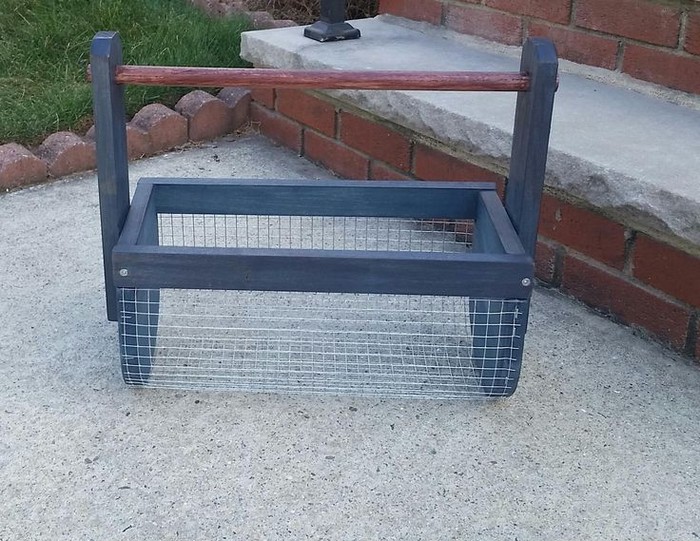

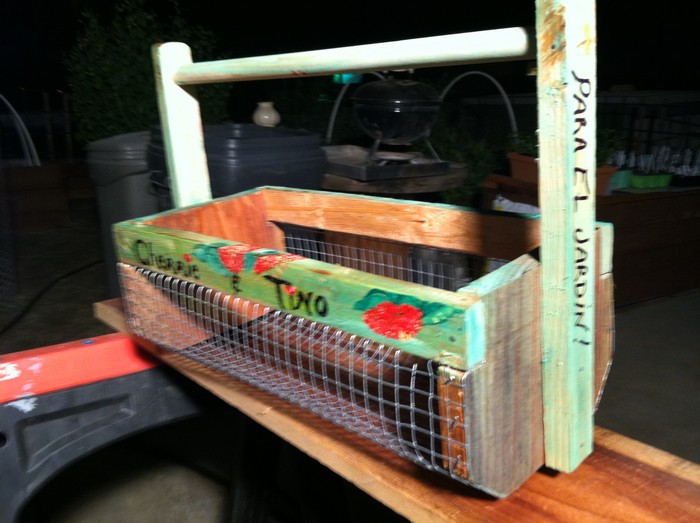
Benefits of Using a Vegetable Hod in the Garden
Using a vegetable hod in the garden can significantly enhance your gardening experience. This traditional tool is not just about utility; it brings a combination of efficiency, convenience, and care to the process of harvesting and handling garden produce.
Here’s how incorporating a vegetable hod into your gardening routine can be beneficial:
Efficient Harvesting
A vegetable hod allows you to gather more produce in fewer trips. Designed to hold a substantial amount of fruits and vegetables, it reduces the time and effort spent going back and forth between the garden and your home. This efficiency is especially valuable during peak harvest season when you have a lot of produce to collect.
Reduced Damage to Produce
The design of a vegetable hod, often featuring a wide and open structure with a slatted or mesh bottom, helps in gently handling the produce. This minimizes bruising and damage to fruits and vegetables when compared to tossing them into a solid bucket or basket. The open design also allows for dirt and debris to fall away, reducing cleanup later.
Improved Air Circulation
The construction of vegetable hods promotes better air circulation around the harvested produce. This is crucial for preventing the buildup of moisture, which can lead to rapid spoilage. By using a vegetable hod, you ensure that your fruits and vegetables start drying off from garden moisture even before they reach your kitchen.
Convenience in Washing
Vegetable hods are particularly useful because they can double as a colander for washing your harvested produce. After gathering your vegetables, you can simply hose them down right in the hod. The water drains through the mesh, washing away soil and residues without the need to transfer the produce to and from a separate colander.
Aesthetic and Functional Appeal
Beyond its practical benefits, a vegetable hod is a charming addition to your gardening toolkit. Its rustic appearance can add an element of traditional charm to your garden activities. It’s also a great conversation starter when used during garden parties or casual outdoor gatherings.
Encourages Frequent Harvesting
With a vegetable hod, the task of picking fruits and vegetables becomes more inviting and less cumbersome. This can encourage more frequent harvesting, which is key to preventing overripe produce and maintaining a healthy, productive garden.
Incorporating a vegetable hod into your gardening practice not only simplifies the process but also enhances the enjoyment and productivity of your gardening efforts. Whether you’re a seasoned gardener or a beginner, a vegetable hod is a valuable asset that helps you manage your harvests with ease and style.
Customizing Your Vegetable Hod for Specific Crops
When gardening, the utility and efficiency of your tools can make a significant difference in your workflow and the quality of your harvest. Customizing your vegetable hod to suit specific crops is an excellent way to maximize its usefulness and cater to the unique needs of different types of produce. Here are some tailored modifications that can enhance the functionality of your vegetable hod for various garden crops:
Adjustable Size and Shape
- Root Vegetables: For bulky and heavy items like potatoes and carrots, consider a sturdier, deeper hod with reinforced sides. This helps in accommodating the weight and prevents damage during transport.
- Leafy Greens: Leafy greens such as lettuce and spinach benefit from a shallower, wider hod that spreads the produce out to prevent crushing. Lighter materials can be used here to keep the hod easy to carry.
Mesh Adjustments
- Fine Mesh for Small Produce: If you frequently harvest small items like cherry tomatoes or berries, adapting your hod with a finer mesh can prevent them from falling out. This adjustment ensures that even the smallest fruits are safely transported.
- Larger Openings for Aeration: Bulky or moist vegetables like zucchini and cucumbers benefit from larger mesh openings, which improve air circulation and speed up the drying process, reducing spoilage risks.
Divider Installations
- Segmentation for Mixed Harvests: Installing removable dividers can transform your vegetable hod into a multi-section tool, allowing you to separate different types of produce during a single trip. This is particularly useful for delicate produce that may be damaged if mixed with heavier items.
Handle Modifications
- Ergonomic Handles for Ease of Carrying: Depending on the typical load and distance to your garden, consider customizing the handle of your vegetable hod. Longer handles can distribute weight more evenly, while padded handles increase comfort during transportation.
Material Choices
- Durable Materials for Heavier Loads: When customizing your hod, choosing the right materials can be crucial. For heavier produce, sturdier woods or even lightweight metals can ensure durability. For lighter, everyday harvesting, traditional woods like cedar provide sufficient strength and add aesthetic appeal.
Water-Resistant Finishes
- Protective Coating for Longevity: Applying a water-resistant finish to your vegetable hod can protect it from moisture and dirt, extending its life and maintaining its appearance. This is especially useful for hods used in damp climates or for watering tasks within the garden.
Customizing your vegetable hod not only optimizes its functionality but also enhances your gardening experience by making the process more efficient and enjoyable. By tailoring your hod to fit the specific needs of your crops, you ensure that your gardening tools work as hard as you do.
Conclusion
Crafting your own vegetable hod can be a rewarding project that enhances your gardening efficiency and protects your produce. With customized features tailored to your specific gardening needs, the hod becomes an indispensable tool that streamlines the harvesting process. This DIY project not only saves money but also adds a personal touch to your gardening activities.
We have more creative recycling project for your garden. Check out our garden hose basket guide!

